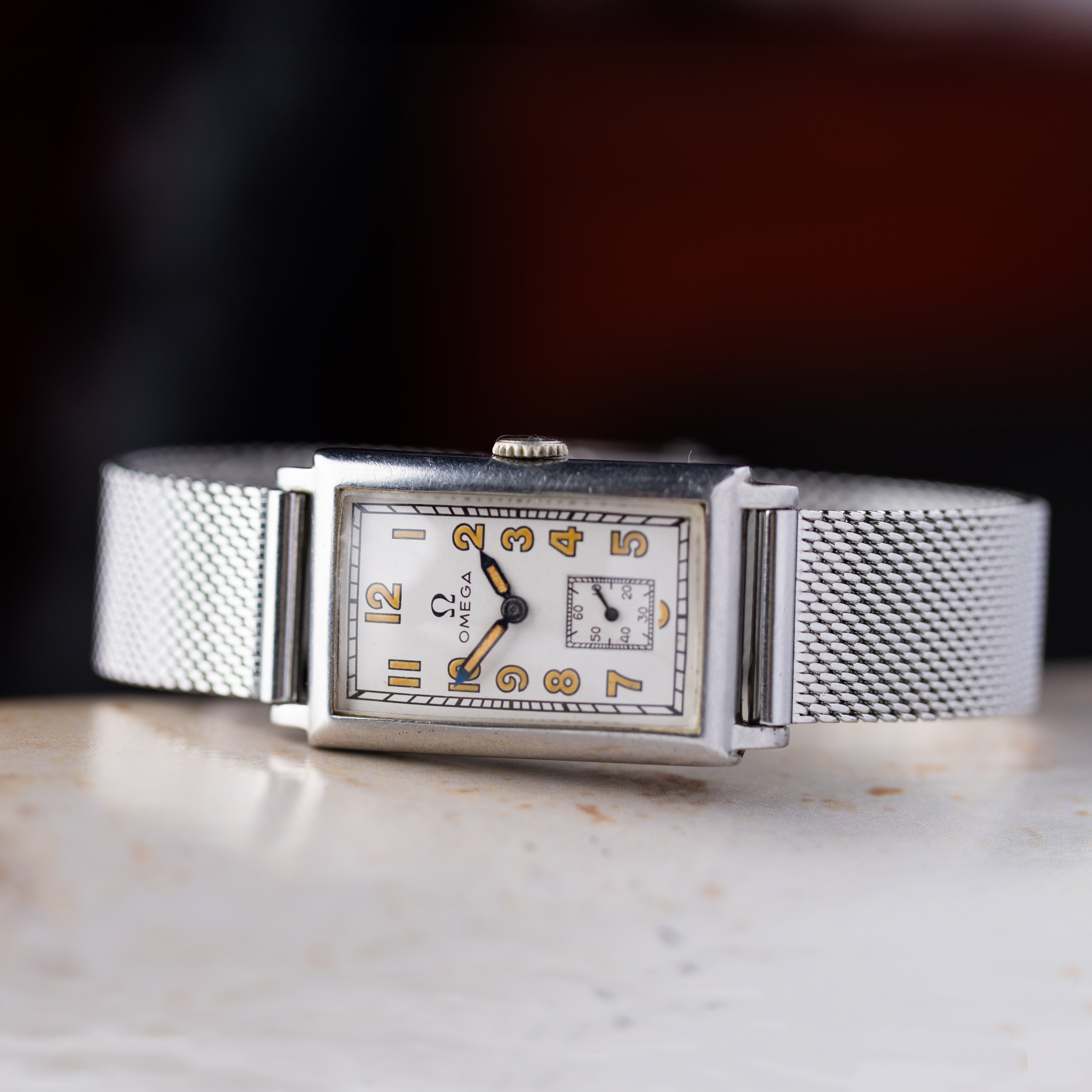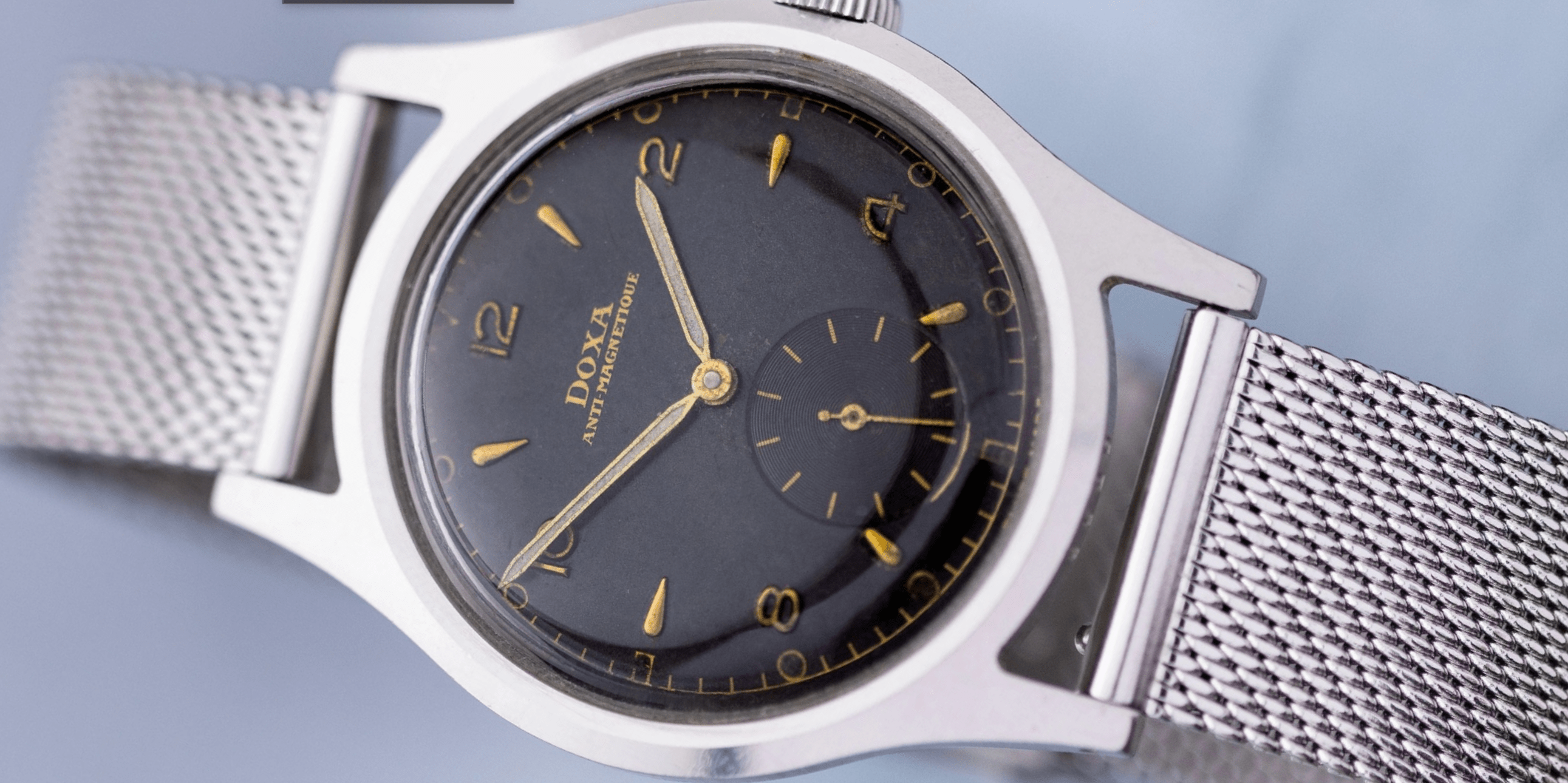When exploring the world of vintage horology, connections between iconic timepieces and lesser-known brands often reveal fascinating stories of shared craftsmanship and innovation. One such story lies in the Borgel case, a hallmark of robust watchmaking that unites the prestigious Patek Philippe Ref. 565 and select models from Doxa, a brand often admired for its adventurous spirit and technical ingenuity.
This article delves into how Francois Borgel’s waterproof case designs became the common thread linking two very different brands, creating a legacy that continues to resonate with collectors today.
Francois Borgel and the Waterproof Case
Francois Borgel was a visionary in watch case manufacturing, celebrated for his groundbreaking patent in 1892 for one of the earliest water-resistant watch cases. This innovation was ahead of its time, addressing the need for robust and durable wrist watches that could resist environmental elements such as moisture and dust.
In 1924, the Borgel company underwent a significant transition when it was acquired by Taubert & Fils, a family-run business that saw the immense potential in Borgel’s designs. The acquisition is believed to have been driven by economic reasons, as Borgel’s daughter sold the company following her father’s passing.
Following the acquisition, Taubert & Fils revitalized Borgel’s pioneering waterproof case concept, updating it to meet the demands of the evolving wristwatch market. With fresh capital and innovation, the company became a leader in manufacturing waterproof cases and specialized in the intricate processing of steel—a critical material for durable timepieces.
The Patek Philippe Reference 565
Introduced in 1938, the Patek Philippe Ref. 565 was a groundbreaking model for the Geneva-based watchmaker. It was one of their first wristwatches to feature a screw-back case, making it far more resistant to water and dust than earlier models.
The 35.5mm case size, considered large for its time, was both practical and modern. Designed to house calibers such as the 12-120 (manual-winding) and the later 27SC (with central seconds), the Ref. 565 offered a combination of elegance and robustness.
Key design variations included:
-
Sector dials with art deco aesthetics.
-
Military-style dials with luminous hands and numerals.
-
Timeless silvered or gilt dials with minimalist hour markers.
The Borgel case played a pivotal role in ensuring the Ref. 565 could withstand the rigors of daily wear while maintaining its signature elegance.

Doxa and the Borgel Connection
While Doxa is best known for its dive watches, such as the iconic Sub 300, the brand’s mid-20th-century models showcased technical sophistication and design innovation. During the 1940s and 1950s, Doxa utilized Borgel cases in several of its watches, creating a direct link to the Patek Philippe Ref. 565.
One notable example is the Doxa Ref. 565, which features a 35mm Borgel case design nearly identical to its Patek counterpart. These watches often included:
-
Black gilt dials with luminous radium markers.

-
The shape of the crown is also really characteristic, as it has a slight outward bump. Collectors nicknamed it “priest hat“.

-
Robust, screw-back cases that ensured durability.

Despite lacking the prestige of Patek Philippe, Doxa’s watches with Borgel cases offered exceptional quality and shared the same principles of water resistance and reliability.
Why the Borgel Case Matters
The Borgel case design represents a significant step forward in watchmaking, addressing a fundamental challenge of the era: making watches that could withstand harsh conditions while remaining stylish and functional.
For Patek Philippe, the Borgel case elevated the Ref. 565 into a category of its own—a dress watch with the ruggedness of a tool watch. For Doxa, it allowed the brand to produce versatile, high-quality timepieces that catered to professionals and adventurers.
This shared use of Borgel cases highlights how one innovative manufacturer could bridge the gap between two distinct watchmaking philosophies: Patek Philippe’s pursuit of timeless luxury and Doxa’s focus on practicality and adventure.
Collectibility and Legacy
Today, both the Patek Philippe Ref. 565 and Doxa watches with Borgel cases are highly sought after by collectors. Patek’s models command significant premiums at auctions, particularly those with rare dial configurations. Meanwhile, Doxa’s Borgel-cased watches offer a more accessible entry point for enthusiasts seeking a connection to this important chapter in watchmaking history.
The Borgel case remains a testament to the power of innovative engineering and its ability to shape the trajectory of horological design. Whether adorning the wrist of a refined collector or an adventurous spirit, these watches carry the legacy of Francois Borgel—a name that continues to inspire appreciation and admiration in the world of vintage watches.
By uncovering the connection between the Patek Philippe Ref. 565, Doxa, and the Borgel case, we see how innovation transcends brand boundaries, creating a lasting impact on horology that unites enthusiasts across all walks of life.


